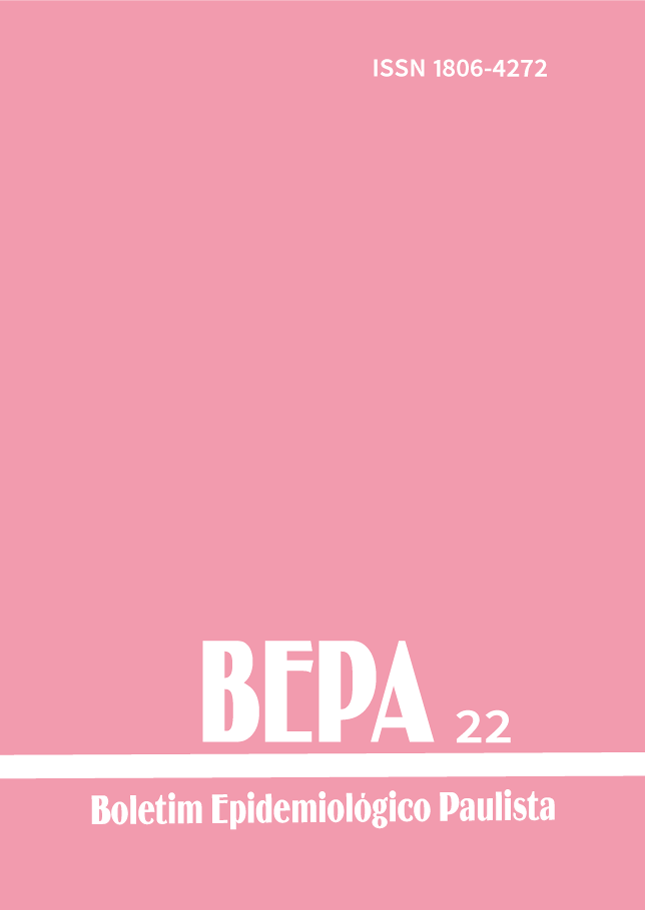Resumo
A importância das Infecções Hospitalares (IH) transcende os aspectos médicos individuais, pois sua apresentação endêmica, e freqüentemente epidêmica, confere ao problema dimensão de saúde pública. A adoção de um adequado sistema de vigilância epidemiológica é um imperativo para definição de ações governamentais. Considerando a necessidade de mudança no sistema de vigilância epidemiológica (VE) das IH no Estado de São Paulo, foi realizado um projeto piloto na região de São José dos Campos, com o objetivo de avaliar a factibilidade de um sistema de VE das IH, a ser aplicado no Estado de São Paulo. Foram selecionados indicadores de IH para hospitais gerais e de longa permanência, aplicados por meio de planilha de arquivo Excel. Estes indicadores foram notificados por 27 instituições previamente treinadas, durante o período de outubro de 2003 a julho de 2005. Os resultados identificaram uma boa adesão por parte das instituições, de acordo com a sua complexidade de assistência. A maior parte das instituições (88,9%) notificou dados de infecção em cirurgia limpa; 15 (55,6%) instituições notificaram dados referentes à Unidade de Terapia Intensiva (UTI), 5 (18,5%) notificaram dados de Unidade de Terapia Intensiva Neonatal e 2 (7,4%) notificaram dados de IH em hospitais psiquiátricos. A informação quanto aos agentes de hemocultura em UTI foi reportada por 14 (51,9%) hospitais. Embora com algumas limitações, o sistema implantado foi considerado factível de ser aplicado e permite direcionar as ações governamentais para a prevenção e controle de IH.
Referências
Brasil. Ministério da Saúde. Portaria 2616/MS/GM, de 12 de maio de 1998. Diário Oficial da União, Brasília, 13 de maio de 1998. Seção I, p. 133.
Anvisa. Legislação e Criação de um Programa de Prevenção e Controle de Infecção Hospitalar. In: Anvisa. Curso Infecção Relacionada à Assistência à Saúde. Versão 1.0. Módulo 1.
Prade SS; Oliveira ST; Rodrigues R et al. Estudo Brasileiro da Magnitude das Infecções Hospitalares em Hospitais Terciários. Rev Controle Inf Hosp, v. 2, p. 11-25, 1995.
CVE. Comitê Técnico de Infecção Hospitalar. Diretrizes para Implantação de um Programa de Controle de Infecção Hospitalar (PCIH) para Hospitais do Estado de São Paulo. s/d.
CVE. Divisão de Infecção Hospitalar. Programa de Infecção Hospitalar. Disponível em: www.cve.saude.sp.gov.br [atualizado 2003 nov. 4].
CVE. Divisão de Infecção Hospitalar. Orientações para o Preenchimento do Instrumento de Coleta de Dados. Disponível em: www.cve.saude.sp.gov.br [atualizado em 2004 fev.].
CDC. Centers for Disease Control and Prevention. Division of Healthcare Quality Promotion. National Nosocomial Infections Surveillance (NNIS) System Report, data summary from January 1992 through June 2004, issued October 2004. Am J Infect Control, v. 32, n. 8. p. 470-85, 2004.
Grinbaum RS. Infecções do Sítio Cirúrgico e Antibioticoprofilaxia em Cirurgia. In: Rodrigues EAC et al. Infecções Hospitalares: Prevenção e Controle. São Paulo. Ed. Sarvier. 1997. cap. 2, p. 149-167.
Fernandes AT. Indicadores Epidemiológicos das Infecções Hospitalares. Disponível em: www.apm.org.br. [Acesso 4/3/05].
Garner S J; Jarvis WR; Emori TG; Horan TC e Hughes JM. CDC Definitions for Nosocomial Infections. Am J Infect Control, v. 16, p. 128-40, 1988.

Este trabalho está licenciado sob uma licença Creative Commons Attribution 4.0 International License.
Copyright (c) 2006 Maria Clara Padoveze, Ana Cecília MacDowel Gonçalves Falcão, Antonio Carlos Vanzeli, Carlos Magno Castelo Branco Fortaleza
